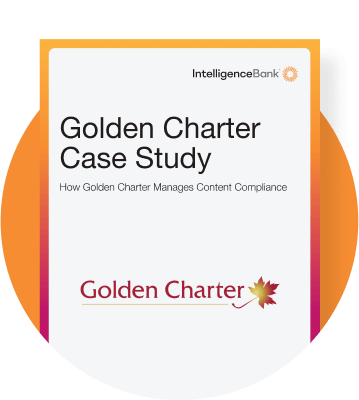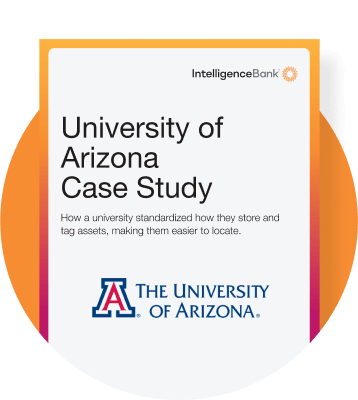It’s no secret that Marketing and Compliance teams, particularly in highly regulated industries, are often at odds. In fact, it’s even documented. We recently undertook a study with Arlington Research to get to the heart of the issues faced by both teams. The study involved more than 500 marketing, compliance, and legal professionals from financial services and insurance organizations in the U.K., U.S., and Australia. We found similar patterns in every market – points of difference and points of alignment. This enabled us to not only unearth the top marketing and compliance challenges, but to offer a pathway to a future with less friction.
The potential benefits of resolving these issues through understanding, collaboration and technology are significant. It not only ensures regulatory compliance but also enhances the quality and effectiveness of marketing efforts. And ultimately, fixing this divide is not just good for solving marketing compliance challenges – it’s good for the entire business.
What are the Top 3 Challenges for Marketing?
Marketers responded to questions in the study about their responsibilities, interdepartmental relationships, daily processes, and more. The results of these highlighted several marketing compliance challenges requiring attention:
#1: Appreciating Experience and Knowledge
82% of marketers believe that, with enough expertise in their field, they no longer need compliance reviews. They say that practice and experience give them the confidence to memorize, apply, and double-check their content for legal risk.
Why it Matters
This highlights a significant disconnect between marketers’ perceptions and the realities of compliance requirements. While 82% of marketers may feel confident in their ability to handle compliance due to their expertise, this overconfidence can lead to unintentional oversights and increased legal risks. Furthermore, regulations are complex and frequently updated, making it challenging for individuals to keep up without dedicated support or regular training.
Relying solely on personal expertise without formal compliance reviews can present risks including non-compliance, legal repercussions, and damage to the company’s reputation. Implementing structured compliance reviews ensures thorough, up-to-date adherence to regulations, protecting the company and its stakeholders.
#2: Inefficient workflows
79% of marketers believe that even if a cohesive workflow exists, it may be slowed by issues such as inconsistent feedback, approval delays, and unnecessary steps. 79% also say the review process is too long and convoluted.
Why it Matters
Inefficient review processes can hinder marketing productivity and effectiveness. When marketers say their company lacks a well-defined review process, it indicates there may be gaps that can lead to inconsistent reviews, increased errors, and compliance risks potentially slipping through.
With 79% highlighting issues in existing workflows such as conflicting feedback, approval delays, and unnecessary steps, it becomes clear that current processes need a rethink. Not only is it inefficient, it frustrates employees and delays time-to-market for campaigns. This marketing compliance challenge reduces competitive edge. Moreover, when the review process is too convoluted, it can stifle creativity, lower morale, and ultimately impact the bottom line.
Enabling efficiency in these processes is crucial for maintaining high standards, ensuring compliance, and effective marketing execution.
#3: Barriers to Progress
As the velocity of marketing content submitted for review increases, a concerning majority of marketers—81%—identify compliance as a barrier. In addition to the length of the process being a challenge, Marketing believes that Legal and Compliance lack understanding of their functions’ objectives, making it difficult for the review process to fulfill its role and the department’s needs efficiently.
Why it Matters
The increasing volume and pace of marketing content draws a bold line under inefficiencies and challenges in the marketing compliance process. It illustrates a process constantly under strain. When the review process is perceived as slow and misaligned with marketing objectives, it creates friction. If legal and compliance teams lack an understanding of marketing goals, their feedback may be considered irrelevant or not helpful, further delaying approvals. This disconnect can lead to missed opportunities, slower time-to-market, and frustration in marketing. Streamlining compliance processes and improving cross-departmental communication is crucial for ensuring that reviews are thorough and efficient, enabling the company to launch content on time while maintaining compliance.
What are the Top 4 Challenges for Legal and Compliance Teams?
While Compliance and Legal teams may face different challenges, our research revealed a significant overlap in the core issues with their marketing colleagues. This alignment can serve as a foundation for better understanding and collaboration. Here are the key areas of concern, as indicated by our survey:
#1: Communicating the Importance of Compliance Reviews
A large portion of compliance respondents believe the Marketing team doesn’t understand the intricacies of a compliance review when it comes to identifying regulatory and brand risk in marketing and advertising copy. In fact, 82% of Compliance professionals say marketers don’t understand why abiding by the rules is so crucial.
Why it Matters
This highlights a critical disconnect between Compliance and Marketing teams, which can lead to ineffective collaboration and increased risk of non-compliance. If the intricacies of the compliance review process are not understood, it suggests that Marketing may overlook critical errors, resulting in submissions requiring more revisions. Furthermore, with 82% believing that marketers don’t understand the importance of abiding by the rules, there could be a significant risk of producing non-compliant content, potentially leading to legal repercussions and reputational damage.
Bridging this knowledge gap is crucial for ensuring that marketing efforts are creative and compliant, fostering a more efficient and cooperative working relationship between the two teams.
#2: Streamlining the Review Process
Legal and Compliance teams acknowledge that the underlying processes are inefficient. Many respondents feel their company lacks a well-defined review workflow, and 85% believe reviews would be significantly more efficient if they didn’t constantly have to recheck content for adherence to basic rules.
Why it Matters
Inefficient legal and compliance processes can lead to wasted time, increased operational costs, and a higher risk of errors. When respondents indicate their company lacks a well-defined review workflow, it suggests that many organizations struggle with inconsistent, unclear procedures, hindering productivity and delaying marketing campaigns.
Additionally, 85% believe that constantly rechecking content for adherence to elementary rules reduces efficiency. This repetitive task consumes valuable time and diverts attention from more complex, strategic work. Streamlining and automating these basic compliance checks can lead to faster, more reliable reviews, allowing teams to focus on more complex or revenue-generating activities and improving overall organizational efficiency.
#3: Managing Accountability
Accountability is a cornerstone of any relationship, especially one with such high stakes. 80% or Legal and Compliance respondents believe the marketing team often deflects blame when content is challenged externally.
Why it Matters
Accountability and effective collaboration between Compliance and Marketing teams are crucial for maintaining high standards and avoiding legal risks. When 80% believe that marketing often deflects blame, it indicates a significant trust and communication gap.
Lack of accountability can lead to unresolved issues, ultimately harming the organization’s efficiency and reputation. Building mutual respect and clear accountability can improve cooperation, streamline processes, and ensure that both teams work together effectively to meet the organization’s objectives and protect its interests.
#4: Working with Marketing
Perhaps unsurprisingly, another top challenge for Legal and Compliance teams is working with Marketing. This relationship is viewed as a daily hurdle, which indicates conflict can arise during small interactions as well as more serious issues.
Why it Matters
The relationship between Compliance and Marketing is essential for ensuring that all content meets regulatory standards while effectively promoting the business.
When Compliance teams view working with Marketing as a daily hurdle that’s a problem. It highlights frequent conflicts that can disrupt workflow and productivity, leading to delays, frustration, and a lack of cohesion.
Improving this relationship is crucial for creating a smoother, more efficient process that allows both teams to collaborate effectively, ensuring that marketing efforts are compliant and timely, thereby protecting the company’s reputation and operational efficiency.
Key Takeaways for Both Teams
While Marketing and Compliance have challenges, breaking these problems into their core elements shows significant patterns. A clear illustration: 80% of both sides agree that their relationship feels like an “us vs. them” scenario, indicating misunderstanding and miscommunication.
However, 84% of Marketers believe good governance is crucial to business success. This indicates that while the process of compliance reviews may be divisive, the underlying values of integrity and the importance of the process are shared between teams. This shared commitment to business success can serve as a unifying force, helping both teams to work towards a common goal.
In addition, 81% of marketers and 89% of compliance professionals agree that compliance reviews should be less subjective. Most respondents from both teams also noted that they’d appreciate (and importantly are open to) productive conversations about possible improvements—another indication of willingness to refine the process.
This openness to change should be seen as an opportunity for growth and motivate both teams to engage in these conversations.
Benefits of Using AI to Manage Compliance
- Automated Risk Detection: Quickly identifies potential compliance risks in marketing content, reducing the chance of human error.
- Faster Review Processes: Streamlines the review process by providing instant feedback, significantly reducing time to approval.
- Consistent Compliance Checks: Ensures that all content adheres to the latest regulations and standards, maintaining uniformity across marketing materials.
- Reduced Workload for Compliance Teams: Minimizes repetitive manual tasks, allowing compliance professionals to focus on more strategic initiatives.
- Enhanced Collaboration: Facilitates better communication between Marketing and Compliance teams by providing clear, actionable insights.
- Scalability: Easily adapts to increasing volumes of content without sacrificing review quality, making it suitable for growing organizations.
- Data-Driven Insights: Offers analytics and reporting features that help both teams understand trends and improve processes over time.
- Continuous Learning: Leverages machine learning to improve accuracy and efficiency over time as it processes more content and feedback.

At IntelligenceBank we help heavily regulated businesses scale internal legal reviews of digital advertising and marketing content, ensuring compliance with regulatory obligations and protecting their customers and reputation. Our technology leverages a combination of custom logic and powerful automation to detect legal and compliance risks in marketing assets, and provides consistent, actionable feedback up to 30x faster than manual review methods, saving legal teams hours of review time, per marketing campaign.
As this tech is delivered as a part of a total end to end content creation solution, it enables you get content out the door faster. You can go from brief to brand and compliance review to launch all in one platform. Our centralized repository uses a combination of automation and AI to manage brand compliance, brief intake forms, approval workflows and asset management. When this is combined with our AI-powered document and web scanning tool, it enables fast identification of risks and suggesting fixes. This removes much of the heavy lifting and repetitive work from the Compliance team and a lot of ‘to and fro’ and late amendments for Marketing. And of course, the added bonus of reducing these marketing compliance challenges is that it creates an environment where both teams can live with a lot less friction.
Want to learn more? Download our white paper “How to Resolve the Divide Between Marketing and Compliance Teams” to see more of our study and solutions to address top marketing and compliance challenges. If you’d like to see it in action, book a demo by clicking here.





